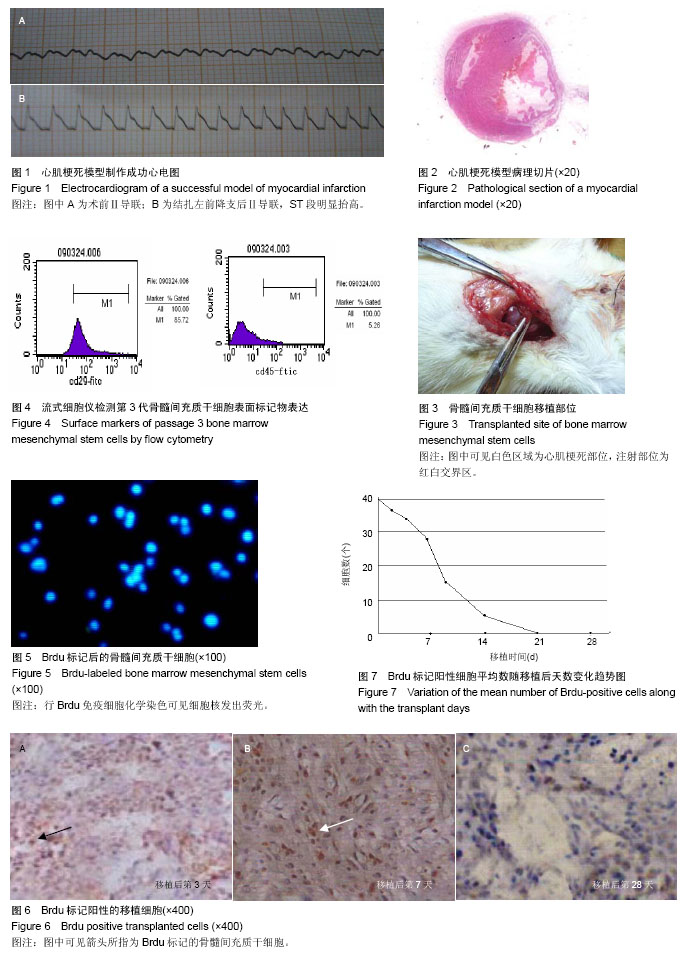| [1] Segers VF, Lee RT. Stem-cell therapy for cardiac disease.Nature. 2008;451(7181):937-942.
[2] Arnesen H, Lunde K, Aakhus S,et al. Cell therapy in myocardial infarction.Lancet. 2007;369(9580):2142-2143.
[3] Ge J, Li Y, Qian J,et al. Efficacy of emergent transcatheter transplantation of stem cells for treatment of acute myocardial infarction (TCT-STAMI).Heart. 2006;92(12):1764-1767.
[4] Nygren JM, Jovinge S, Breitbach M,et al. Bone marrow-derived hematopoietic cells generate cardiomyocytes at a low frequency through cell fusion, but not transdifferentiation.Nat Med. 2004;10(5):494-501.
[5] Grinnemo KH, Månsson-Broberg A, Leblanc K,et al. Human mesenchymal stem cells do not differentiate into cardiomyocytes in a cardiac ischemic xenomodel.Ann Med. 2006;38(2):144-153.
[6] Chen SL, Fang WW, Ye F,et al. Effect on left ventricular function of intracoronary transplantation of autologous bone marrow mesenchymal stem cell in patients with acute myocardial infarction.Am J Cardiol. 2004;94(1):92-95.
[7] Chen S, Liu Z, Tian N,et al. Intracoronary transplantation of autologous bone marrow mesenchymal stem cells for ischemic cardiomyopathy due to isolated chronic occluded left anterior descending artery.J Invasive Cardiol. 2006; 18(11): 552-556.
[8] Kamihata H, Matsubara H, Nishiue T,et al. Implantation of bone marrow mononuclear cells into ischemic myocardium enhances collateral perfusion and regional function via side supply of angioblasts, angiogenic ligands, and cytokines. Circulation. 2001;104(9):1046-1052.
[9] Kinnaird T, Stabile E, Burnett MS,et al.Bone-marrow-derived cells for enhancing collateral development: mechanisms, animal data, and initial clinical experiences.Circ Res. 2004; 95(4):354-363.
[10] Ali MS, Mudagal MP, Goli D.Cardioprotective effect of tetrahydrocurcumin and rutin on lipid peroxides and antioxidants in experimentally induced myocardial infarction in rats.Pharmazie. 2009;64(2):132-136.
[11] 朱峰,郭光华,詹剑华,等.兔骨髓间充质干细胞体外BrdU标记最佳时间和标记浓度的筛选[J].中国组织工程研究与临床康复, 2010,14(27):4970-4974.
[12] Gratzner HG.Monoclonal antibody to 5-bromo- and 5-iododeoxyuridine: A new reagent for detection of DNA replication.Science. 1982;218(4571):474-475.
[13] 郭启仓,刘志勇,李占清,等. 5-溴脱氧尿嘧啶核苷标记骨髓间充质干细胞的技术探讨[J].华北煤炭医学院学报, 2004,6(1):4-6.
[14] 李春晖,焦保华,康春生,等.骨髓基质干细胞培养、鉴定及标记的初步研究[J].细胞与分子免疫学杂志,2006,22(5):601-603.
[15] Dow J, Simkhovich BZ, Kedes L,et al.Washout of transplanted cells from the heart: a potential new hurdle for cell transplantation therapy.Cardiovasc Res. 2005;67(2): 301-307.
[16] Strauer BE, Brehm M, Zeus T,et al.Repair of infarcted myocardium by autologous intracoronary mononuclear bone marrow cell transplantation in humans.Circulation. 2002;106 (15):1913-1918.
[17] Shake JG, Gruber PJ, Baumgartner WA,et al.Mesenchymal stem cell implantation in a swine myocardial infarct model: engraftment and functional effects.Ann Thorac Surg. 2002; 73(6):1919-1925.
[18] Jiang CY, Gui C, He AN,et al.Optimal time for mesenchymal stem cell transplantation in rats with myocardial infarction.J Zhejiang Univ Sci B. 2008;9(8):630-637.
[19] Strauer BE, Brehm M, Zeus T,et al.Repair of infarcted myocardium by autologous intracoronary mononuclear bone marrow cell transplantation in humans.Circulation. 2002; 106(15):1913-1918.
[20] Kraitchman DL, Heldman AW, Atalar E,et al.In vivo magnetic resonance imaging of mesenchymal stem cells in myocardial infarction.Circulation. 2003;107(18):2290-2293. |

.jpg)